Introducing finger puppets
Finger puppets are little puppets that slip onto a single finger. I think they are great educational toys for children of three to five years. I often use them in the finger play activities that form part of my balanced preschool music lesson plans. Finger plays are one of the ten kinds of activity I do in each weekly music lesson.
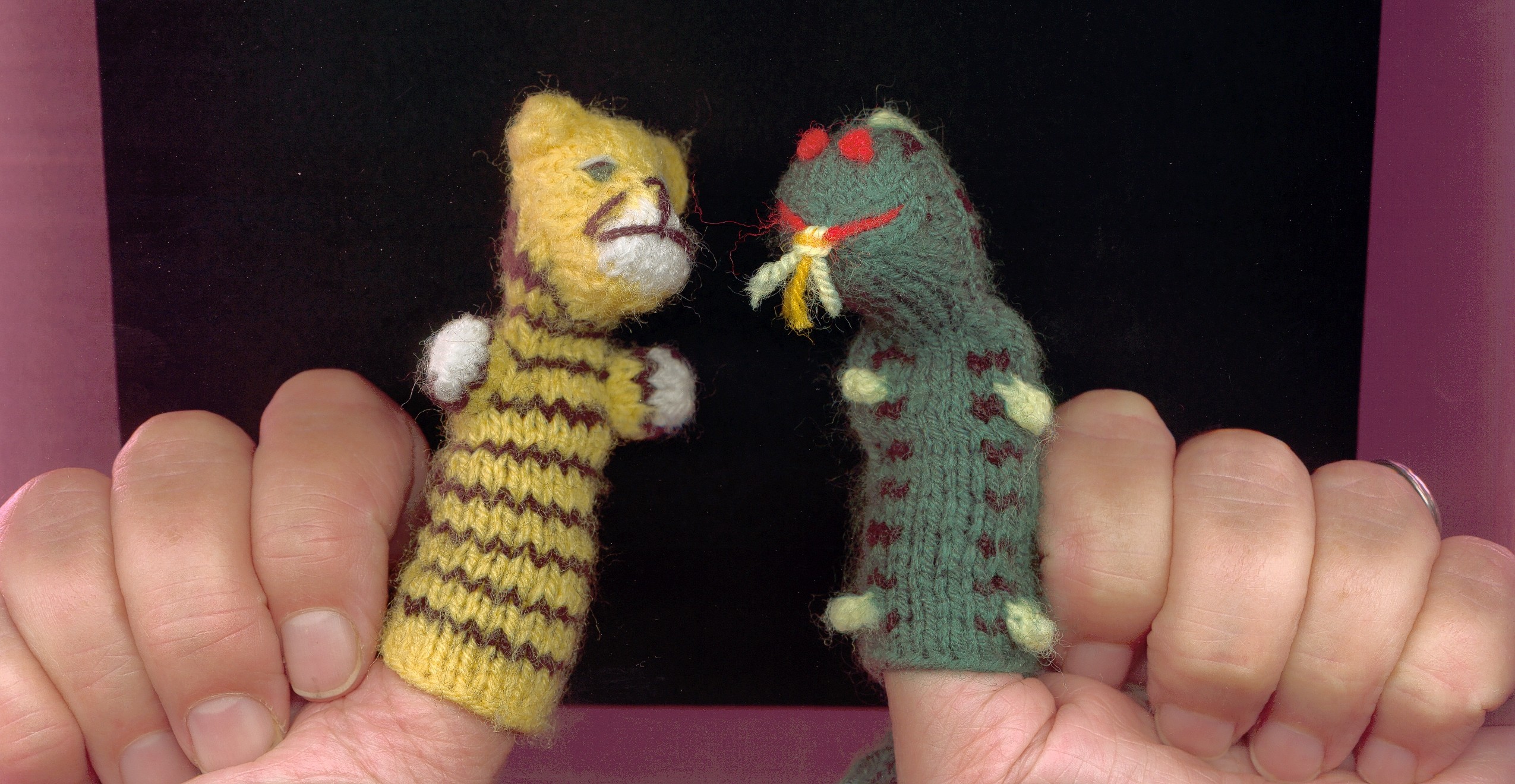
Why are finger puppets so good?
Because they help children develop dexterity by giving them a reason to playfully manipulate the muscles in the fingers, on the top and palm of the hands, and in the wrists. Little growing hands need to develop fine muscle control before we can expect them to do the hard work of guiding pencils to form letters. Or, harder still, playing single notes on a piano or violin with all five fingers. Now that’s really tiring fine muscle control – so let’s have lots of play before our expectations get too high. Play is the child’s work!
Come Dance Little Thumbkin – a finger play song
Today’s finger play song is Come Dance Little Thumbkin. You can hear a sample of how it goes here.
It’s a long song but it’s quite easy to sing because there are five repetitions of the same verse.
For the activity, you need two finger puppets of any variety for you and two more for each child. I found these knitted ones at the Central Market in my home town. You can buy them or better still, make some with your child/ren out of felt, wool or thin rolled card. (Or if you sew, you could improvise by using your thimbles -very folksy and traditional.)
Spend some time playing with the fInger puppets, making funny voices, interacting with the puppets and your child/ren. When you think the time feels about right, take two puppets and put them on your thumbs. Invite your child/ren to do the same but if they don’t, just go ahead and sing the first verse. In between verses change the puppets over to the next finger. They’ll probably copy you but don’t stop and insist they join in, just go right on with the song and activity. Your job is to model the song- not “teach” it.
Use a different voice for each finger, finishing with a baby voice for the little finger. It’s important to keep it playful and to show that you are enjoying making the finger puppets come alive. Perform it with gusto! The song is important but you, the singer, are even more so. This is crucial communication time.
Once again, don’t worry if the children don’t do exactly as you do, especially with three year-olds! You will probably find them playing the game or their version of it some time in the next day or so. Or maybe they won’t let you discover them but they could be playing it privately, even silently, still moving their finger puppets in time.
Tip from a puppet master
Recently I learned from a puppetry educator that children in early childhood will face their puppets in towards them and not away to an audience because they have not yet developed that distancing point of view that separates them as an entity. So don’t expect finger puppet shows from this age. Their plays are for their own benefit, not yours!
Remember, songs are toys for the mind and they carry them always.
If you don’t read music and would like two audio versions of the song (backing track and vocal track) and the lyrics on a chart for your wall, you can buy the complete activity and a year’s worth of other activity songs from the Musical Child website by clicking here. We want to support you singing to and with your children.
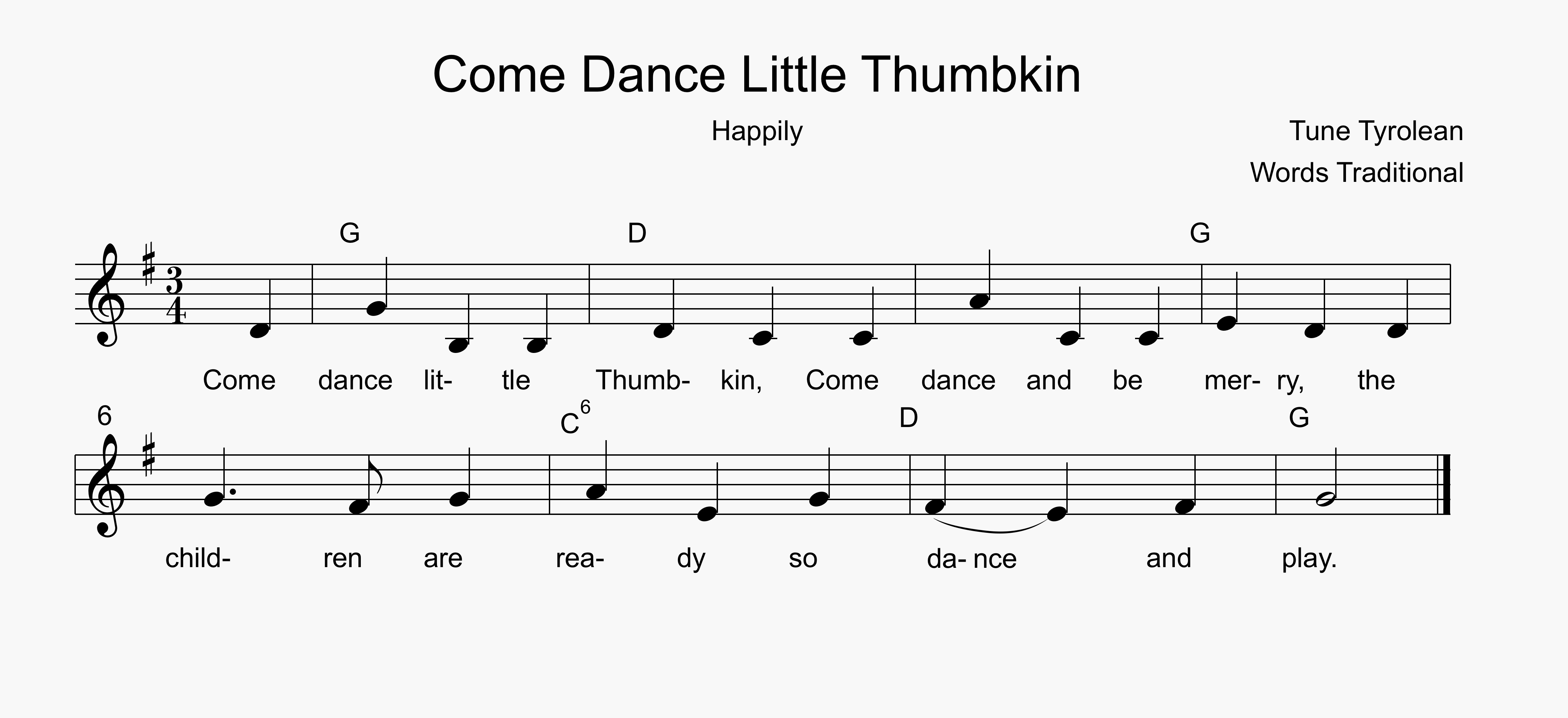
Please add your comments below.
Get Your FREE Educator's Resource Here
Sign-up to Receive a FREE Guide on How to Teach Preschool Music Activities.
Inside this Mini-course you will be able to download a beautiful PDF and a collection of 20 MP3s. You will learn how to deliver nine popular preschool music activities that your children will LOVE!
(p.s. It's a mini-course, that means you'll be in and out in minutes with fresh resources you can use immediately with your children.)
(p.p.s. You also get a bonus lesson on what instruments to use with preschoolers. 🪇)
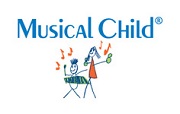
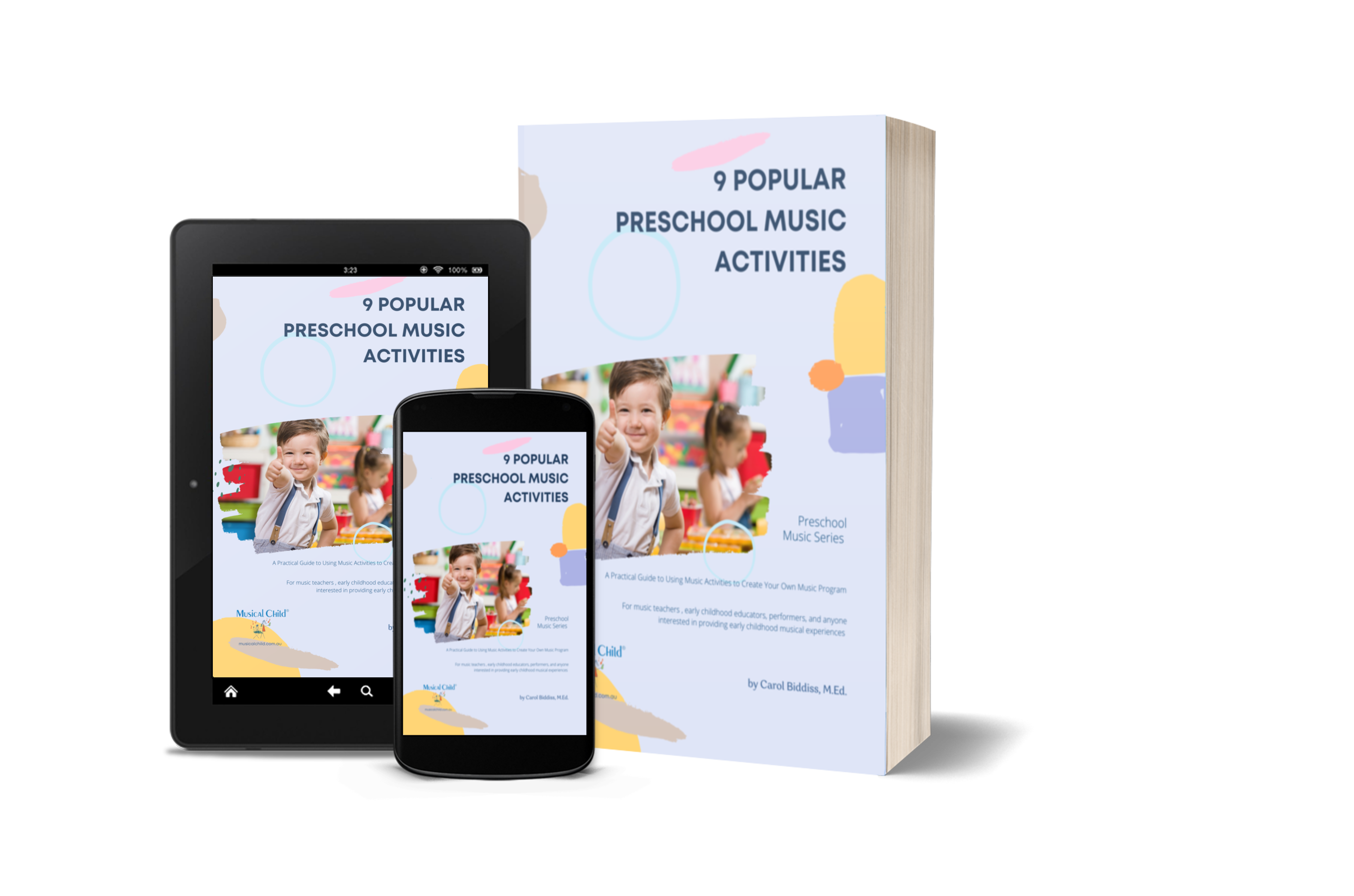
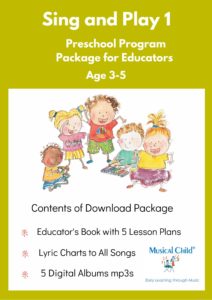

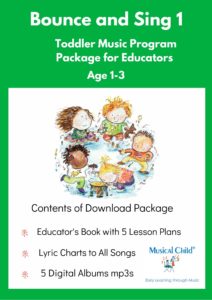
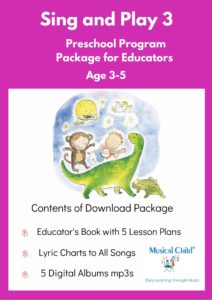
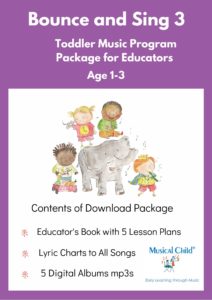
Does anyone have an experience with finger puppets or a favourite finger play to share?
I find the children are very excited when I bring out the finger puppets in my classes, they appear to connect with the playfulness and I have heard them trying out voices to match the puppets they have chosen.
That word “chosen” is the operative one. They need to connect with the character they invent for the puppet so it’s important to give them choices. Yesterday I did this activity with a group of 21 children. I took 80 finger puppets so there was a little pile in front each segment of the circle. Some of the lively boys were having a a delightful time trying out different voices. One child wouldn’t put them on her fingers at all, I didn’t find out whether that was typical or just the day’s mood.